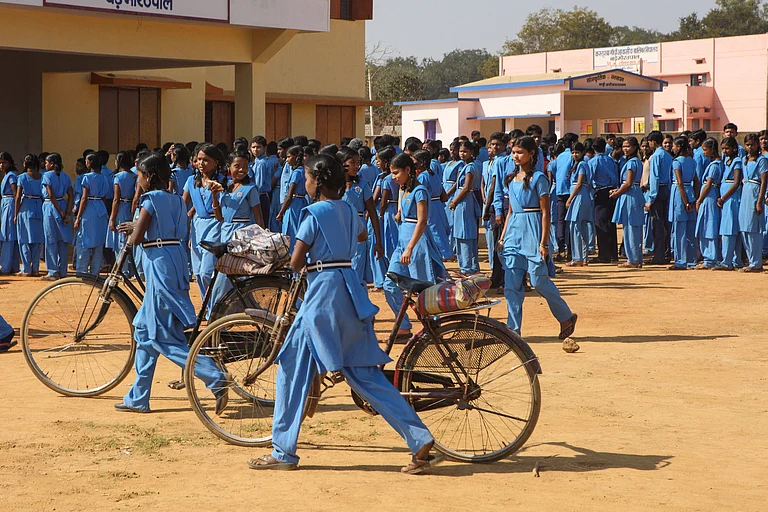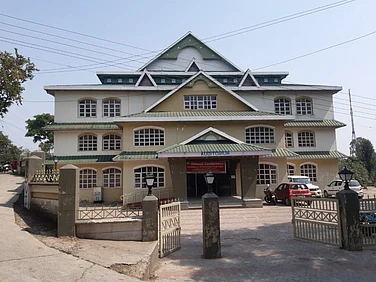Top geoscientists have cautioned the Himachal Pradesh government against an increase in the frequency of natural disasters and made a fresh plea for urgent ‘risk avoidance’ through strict regulations and institutionalised mechanisms, to reduce further human and economic losses in the coming years.
“It is important to understand the climate change effects on the Himalayan geology, and co-morbidities that unregulated development creates. The government and planners have enforced code references in byelaws, besides undertaking landslide susceptibility mapping of all existing vulnerabilities,” suggested Dr Harish Bahuguna, Deputy Director General, of Geotechnical and Geohazard Management at the Geological Survey of India (GSI).
Dr Bahuguna was one of the leading geoscientists and experts invited to a two-day brain-storming session on Geological hazards and landslides, organised jointly by the HP Council for Science, Technology, and Environment (HIMCOSTE) and State Disaster Management Authority. As per Bahuguna, the data gathered by the GSI suggests that the western Himalayan region of Himachal Pradesh, and also Uttarakhand are going to witness more extreme weather conditions and one of the fall-outs will be an increase in the frequency of natural disasters, including excess rains and landslides as was witnessed during the recent monsoon season.
“Centre for Research on Epidemiology of Disasters (CRED) suggests that at least 17 per cent of natural disasters in the world are caused by landslides. Anthropogenic interventions such as road construction, widening, buildings, extensive hill cutting, quarrying, mining, and dumping of debris unscientifically have caused thousands of fatal landslides,” he says.
In an overall worldwide trend, Asia is the most affected continent with around 75 per cent of such landslide incidents, with large numbers being reported in the Himalayan mountains. The top ten countries affected by fatal landslides caused by anthropogenic interventions are located in Asia and India accounts for 20 per cent of such incidents. Earthquakes and landslides are two major hazards threatening Himachal Pradesh. Thus, there is an urgent need to reduce existing vulnerabilities and also work towards risk reduction. The risk that is already built up can be reduced by strengthening buildings and infrastructure and not allowing any construction activity that could cause potential. landslides.
“Landslide susceptibility mapping is paramount to identify areas prone to landslides. The first priority for action under the Sendai Framework for Disaster Risk Reduction approved at the 3rd World Conference on Disaster Risk Reduction in March 2015, held in Sendai (Japan), is to understand the risk and how serious effects can be due to hazards and what can be done to reduce the impacts,” says Hari Kumar, regional coordinator for South Asia, Geo-hazards International.
India is susceptible to natural and man-made disasters, hence it is important to take policy initiatives and make interventions to avoid human-induced dangers even as climatic change continues to affect the Himalayan region with more intensity than anywhere else.
Chief Minister Sukhwinder Singh Sukhu said that the rains, landslides, and flash floods during the recent monsoon that resulted in 509 deaths, 114 of them due to cloud bursts, were unprecedented. Excessive rains which started in April 2023 led to soil over-saturation and made things worse. “Climatic change is just one factor but what we all did to self-invite the problems by building houses without checking soil stability, blocking the natural drainage system, and building multi-stories on debris are vital reasons. The rivers did not enter the houses but we built houses and buildings in the rivers and disturbed the course,” he said.
Areas like Lahual–Spiti and Kinnaur which never used to see rain are now experiencing relentless monsoon rains which could certainly be dangerous to the entire human population, land, and animals. The entire bio-diversity is facing a crisis. “We are going to enforce a very strict regime. We will enact and enforce stringent laws to ensure the safety of its citizens from natural calamities including earthquakes and landslides in the urban towns,” he said.
“The government will make laws for granting permission for all sorts of constructions, whether infrastructure projects and buildings, ensuring structural safety in the wake of what the state has witnessed during past some months, endangering the lives of the people,” he declared empathically.
Sukhu said he had analysed the factors responsible for the crisis and had visited every area affected by the rains, landslides, and floods. What happened in Shimla is unprecedented for which not only the government but each one of us is responsible for ignoring the structural safety of buildings. “People constructed houses on loose soil, unsettled debris, blocked natural drainage systems and resorted to haphazard constructions—many of these illegal and unauthorised. This is a mistake or blunder which kept happening over the years," he added.
He agreed with experts that disasters don't kill anyone but humans do. It is all about how to build structures and buildings which are safe and raised on stable soil. Special Secretary Disaster Management Authority D C Rana informed that more than 114 landslides were reported in the state during monsoon in three different rain spells between July 7 to August 31. He also drew attention to Himachal Pradesh facing the grave threat of earthquakes.
"We live between two earthquakes, one happened and another in the waiting. The last earthquake of 7.8 magnitude happened in Kangra in 1905, almost 118 years back. We may be very clear next. Thus calls for preparedness for the landslides and disasters," said Rana.
Major landslides in Himachal Pradesh
The Gazetteer of the Simla Hill State (1910)
Numerous landslides were induced by an earthquake in 1803. These landslides blocked the river Satluj and river Giri and created huge dams. The bursting of dams led to large scale destruction in Bilaspur and Sirmaur districts.
An earthquake in Kangra 1905 induced numerous landslides in the Beas river valley between Kullu and Manali.
During 1935-1947, around 33 landslides were reported on Kalka-Rampur highway and three landslides on Mandi-Manali highway. Landslides were also reported near Barog on Kalka-Shimla highway in 1935.
During late 1950s, two landslides occurred five and half kilometers south of Kumarsain in Shimla district on Shimla-Rampur highway, due to heavy rainfall between June 4 and 5,1957.
A huge landslip occurred in 1963 on Bilaspur- Chandigarh highway at Gambhar in Bilaspur district.
A massive landslide occurred in Luggar-Bhatti Luggar of Kullu district in 1995.
Source: Geological Survey of India


























